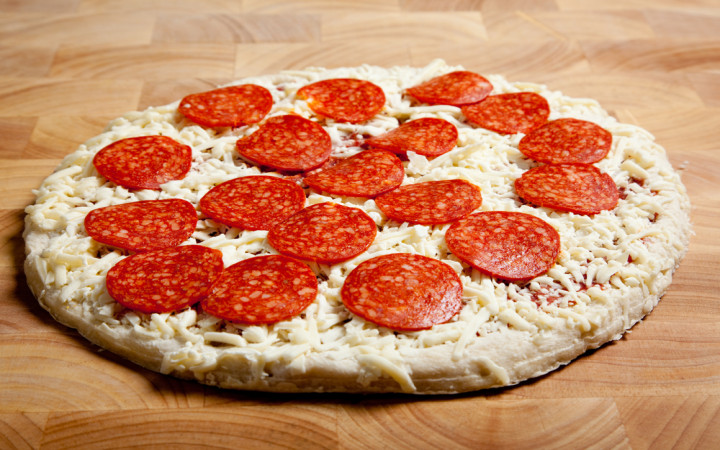Today’s Wonder of the Day was inspired by takota. takota Wonders, “Who invented frozen pizza dough and why?” Thanks for WONDERing with us, takota!
Do you have a favorite holiday? Many kids might point to Christmas. Others might enjoy Rosh Hashanah or Eid. Maybe your favorite holiday falls on June 19, September 16, or February 14. Or perhaps you’re one of the millions of Americans who celebrate the holiday that falls on March 6.
What is March 6? It’s Frozen Food Day, of course! The holiday was established by President Ronald Reagan and Congress in 1984. Since then, Americans have unofficially celebrated their favorite frozen treats on March 6 each year. How will you celebrate Frozen Food Day? If you’re like many kids, a frozen pizza may be in your dinner plans.
Today, most of us take frozen food for granted. The frozen food aisle in the grocery store has existed since before we can remember. And it’s always been filled with tempting treats for every meal—and even snacks in between.
For centuries, though, most food was eaten fresh. It was usually consumed within just a few dozen miles of where it was grown or raised. Exactly how did frozen food come about?
For generations, people living in the Arctic have preserved fish and meats by freezing them in barrels of sea water. In 1923, a man named Clarence Birdseye sought to use this method. He wanted his family to eat fresh food all year. Birdseye invested $7 in an electric fan, buckets of brine, and a lot of ice.
With a bit of trial and error, he eventually found a way to flash-freezing food products without altering their taste. He decided to put them in convenient packaging and sell his product. Flash-frozen vegetables, fruits, and meats were first sold to the public in 1930. They were sold under the name Birds Eye Frosted Foods®.
Of all the products in the frozen aisle today, pizza is probably the most popular. Would you believe, though, that this is relatively new?
Pizzerias opened in America as early as 1890. But pizza wasn’t popular until after World War II. Soldiers returning from Italy craved the pizza pie they’d eaten overseas. When home freezers became common after the war, some pizzerias started selling unbaked frozen pies.
The problem, though, was that the pizza dough was soggy and the toppings lacked flavor. Pizza chefs trying to make a good frozen pie faced two problems: ice crystals and interrupted chemical processes.
Thanks to Birdseye’s flash-freezing process, these problems were soon overcome. Flash-freezing stopped ice crystals from forming. It also helped the toppings keep their flavor.
No one knows for sure who came up with the first frozen pizza. In the 1950s, Celentano Brothers became the first brand of frozen pizza to be sold nationally. Many claim that the first big name in the business, though, was Totino.
In 1951, Rose and Jim Totino opened one of the first pizzerias in Minneapolis, Minnesota. Their business boomed. Things went so well that they decided to try making frozen pizzas. By the late 1960s, Totino’s had become the best-selling frozen pizza in the country.
Even as recently as the 1980s, though, frozen pizzas were a distant second to fresh, hot pizzas delivered from the local pizzeria. Food scientists eventually came up with new types of dough and processes that changed everything.
Modern “rising crust” frozen pizzas hit the shelves in the 1990s. The frozen pizza industry saw sales go from $1 billion per year in 1995 to more than $5 billion per year today. In fact, more than 350 million tons of frozen pizza are now sold in the U.S. each year!
Just how much frozen pizza do Americans eat? In total, more than two billion slices each year. The average American family eats pizza at home 30 times a year, or more than once every two week. How does that compare to your family’s eating habits? Do you love frozen pizza? Maybe you have a different favorite frozen food!
Standards: CCRA.L.3, CCRA.L.6, CCRA.R.1, CCRA.R.2, CCRA.R.4, CCRA.R.10, CCRA.SL.1, CCRA.SL.2, CCRA.W.4




